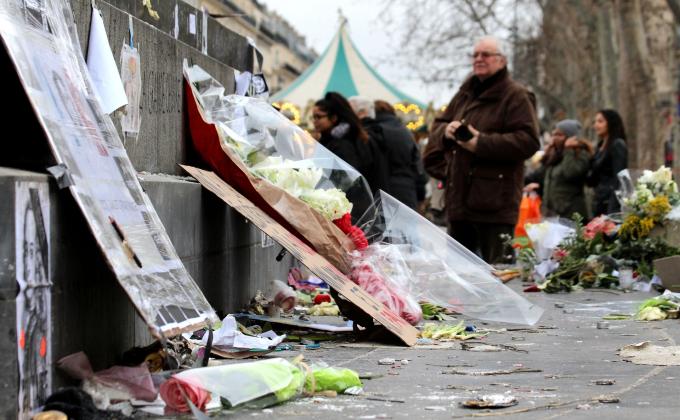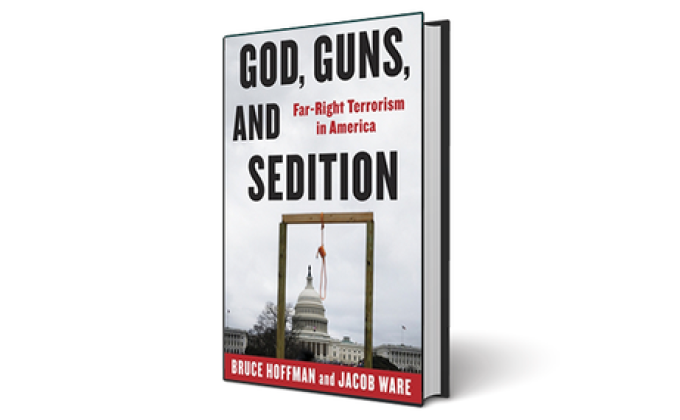How can we best explain the emergence and sustenance of peace in Northern Ireland? This brief article integrates reflection on counter-terrorism – one of the less prominent elements of explanation at present – into a wider account of the nature, timing, and success of the Northern Ireland peace process.
Commemorating the Good Friday Agreement
In this twenty-fifth anniversary year of the 1998 Belfast/Good Friday Agreement, there has rightly been much commemoration and celebration of the work done by those who negotiated that life-saving peace deal. Conferences have gathered together remaining actors, and much has been made of the detailed agreements that were hammered out, and of the striking compromises eventually made.
There is no doubting the significance of the 1998 Agreement, nor of the fact that, despite ongoing violence at a lower level, life has been transformed in Northern Ireland through this inclusive and enduring political deal. The Northern Ireland Troubles cost thousands of lives, in a conflict focusing on issues of state legitimacy and rival nationalisms. The 1990s deal which helped to end the war is one that has justifiably gained global attention. Those who negotiated it rightly deserve respect.
The most lethal actor in the conflict was the Provisional Irish Republican Army (IRA) and, while Irish republican, Ulster loyalist, and UK state violence all played their part in a grisly conflict over numerous decades, the most vital foundation making the Northern Ireland peace process possible was the decision of the IRA to shift from something like war to a more peaceful mode of politics. This was easily the most significant single aspect of the lengthy peace process and it was absolutely essential to its ultimate success. Once the IRA decided that a non-violent route towards its goals was acceptable, the diminution of pro-state loyalist terrorism became achievable, and the downgrading of the state’s military apparatus could be progressed. Without this IRA sea change, no peace process would have been possible. So why did the organisation adopt this course?
The IRA and the Peace Process
Some have suggested that the IRA made this decision because it had effectively been defeated. This seems questionable to me, given that well into the 1990s the IRA still showed itself capable of threatening and using considerable lethal violence.
But it is true that the IRA and the wider republican movement underwent a shift of approach which involved some genuinely extraordinary changes, and that they did so without achieving their central strategic goals. They had lastingly argued the necessity of force, as the means of achieving an essential destruction of Northern Ireland, claiming that the latter simply could not be reformed; now, by contrast, they eschewed violence, and engaged with a reformed Northern Ireland, with the Irish republican party Sinn Fein indeed playing a leading role in the politics of the post-1998 North. The IRA and the republican movement had long rejected the consent principle (by which any change to the constitutional status of Northern Ireland required a majority there to approve of it); now, in backing the Good Friday Agreement, they endorsed this principle as a central part of the politics of Irish self-determination. They had long and loudly rejected the idea of ongoing UK sovereignty over the North of Ireland; now, they ended their campaign of armed struggle without any guarantee at all that such sovereignty would indeed come to an end.
This does not mean that IRA terrorism simply failed. They had had many tactical-operational successes, had undermined their unionist and UK state opponents in numerous ways, and had gained bargaining muscle for Irish republicans when the negotiation process did emerge. But the Provisionals ended their violent campaign without securing the strategic victory that they had sought. This was the major aim of the UK government in its approach to the peace process; it was also the foundation stone of the overall Northern Ireland peace process and its success.
In explaining peace in Northern Ireland, it is not enough therefore to say that leaders showed leadership, or that they took risks for peace (important though these points undoubtedly are). It is vital also to ask why, in particular, Irish republican leaders made this most pivotal of decisions, and why they did so when they did.
In answering that question, there are many issues to consider.
The International Context
International dynamics were favourable in the 1990s. There was a more engaged United States, whose instincts reassuringly tended towards the nationalist rather than the unionist; this US connection also produced the magisterial talks chairing role of Senator George J. Mitchell. There seemed to be significant changes in other international settings of conflict, whether in South Africa, Israel (for a time), or with the end of the Cold War; each of these international changes encouraged republicans to think that compromise was more necessary and potentially more benign. And, while it is ironic to consider this now, the 1990s European Union context was one which had generated closer relationships and greater harmony between the UK and Ireland, thereby making the choreography of the peace process smoother.
But the Northern Ireland conflict had not emerged primarily owing to international developments, and it did not end primarily for those reasons either. The crucial dynamics were closer to home.
Irish and British Dynamics
Here, it became clear that there were rewards for republicans from peaceful politics that would be unattainable while continuing their violence. These included the prospect of much higher levels of voting support for Sinn Fein, which only became the dominant party of Northern nationalism after the IRA had ended their violence. There would also be prisoner release, policing and other reforms, and an end to the ghettoisation of republican politicians that had resulted from the ongoing politics of violence.
Such rewards formed an important part in motivating republican leaders towards the idea of positive engagement with the peace process, but they were not really novel. It had long been pointed out to republicans, not least by their fellow-nationalists in the Social Democratic and Labour Party, that if the IRA ended their violence there would be far greater potential for nationalist momentum than there was while the violence persisted.
Similarly, an important element of the republican change of direction involved a recognition that some previously held assumptions might not in fact be justified. The greatest obstacle to an independent and united Ireland was not, in fact, in London; it lay rather in the opinions of those Irish people (especially Northern Irish unionists) who enduringly resisted the idea of unity. Or, again, any assumption that people in the Republic of Ireland prioritised or enthused over an end to partition did require a rethink.
But these too were far from novel insights. Since the earliest days of the Troubles, these hard realities had repeatedly been pointed out. What was new by the end of the 1980s and start of the 1990s (the true genesis period for republican engagement with peace process possibility) was that IRA violence was by then very clearly not achieving the victory that republicans had earlier and sincerely expected for it. The main strategic goals of ending UK sovereignty and of defending the Northern Catholic community were by then evidently not being achieved by terrorism. Neither the IRA, nor the UK forces, nor pro-state loyalist terrorists could deliver a knock-out blow and achieve victory through violence. There was a stalemate, and that situation owed much to the state’s now clearly lasting commitment to opposing terrorism for as long as was required, and indeed to the state’s demonstrated capacity to contain anti-state violent groups such as the IRA. These factors required time to demonstrate, and that timing aligns with and helps to explain the profound and pragmatic republican sea change. Large numbers of IRA activists were lastingly imprisoned, with no sign of this pattern diminishing. Very many planned IRA operations were now being thwarted through the acquisition of intelligence by the state. Much of that intelligence emerged from there being large numbers of agents and informants within the IRA’s ranks. It also became more and more difficult for the IRA to kill British soldiers in Northern Ireland, as the state became better able to adapt to the IRA threat.
Counter-terrorism was not defeating the IRA, but it was certainly containing its activities and limiting their effectiveness.
Counter-Terrorism and Containment
At the heart of the very pragmatic republican decision to change course and pursue political goals through non-violent means, therefore, was one element which does valuably help to explain the timing. In the 1970s and much of the 1980s there had not been time enough for the state’s commitment and containment-capacity to be demonstrated. By the start of the 1990s there had been, and a hard-headed republican leadership responded agilely, first exploring and then engaging fully with an alternative means of political struggle.
Had the UK state not shown resolve and considerable success in containing terrorism, there would have been a greater sense of potential republican victory for far longer. There would also have been much higher levels of violence in Northern Ireland (including tit-for-tat escalation into something representing a more full-blooded civil war). In those circumstances, the peace process would have been far less likely to emerge.
None of this is to suggest that the IRA were simply defeated. They were not. Nor is it to suggest that state activity was flawless. It was far from that. There should have been a much clearer sense for far longer that pro-state terrorism and anti-state terrorism were equally to be condemned and unequivocally opposed. There were also instances of appalling collusion between some members of state organisations and terrorist actors.
And the state had painfully learned over time to improve its counter-terrorist approach. Over-reliance on military methods in the early 1970s had proved ambiguous in its effects, and had partly contributed to stimulating the IRA terrorism that it had been intended to quell; over time, a less militaristic approach was rightly adopted. Misdiagnosis of the causes behind terrorism delayed effective state engagement, most strikingly with the 1970s efforts to present IRA resistance as essentially criminal in nature; later, more sharp-sighted attempts were made to address the root causes behind the violence. That was a crucial aspect of the negotiations which produced the Good Friday Agreement
Most importantly, the state over time became more aware that counter-terrorism should form only one part of the process of ending violence in Northern Ireland. Yes, the containment of the IRA was an essential part of creating conditions within which compromise could emerge, and within which such compromise might seem attractive to republicans. But this wider politics of inclusion then had to demonstrate that there was indeed a non-violent way of addressing legitimate nationalist concerns and of offering real political momentum. Yes, the including of politicians representing paramilitary organisations was something made possible by those organisations recognising that violence had produced stalemate and containment rather than victory. But, that secured, there did then need to be the inclusive, lengthy process of detailed negotiation and compromise that allowed for the 1998 deal and associated progress.
None the less, the timing and origins of the Northern Ireland peace process undoubtedly involved the role that was played by state counter-terrorism and containment. This will be less loudly trumpeted in anniversary years such as 2023, but it remains painfully true despite that comparative silence, and it should form part of the ongoing conversation about the Northern Ireland peace process and its implications.








